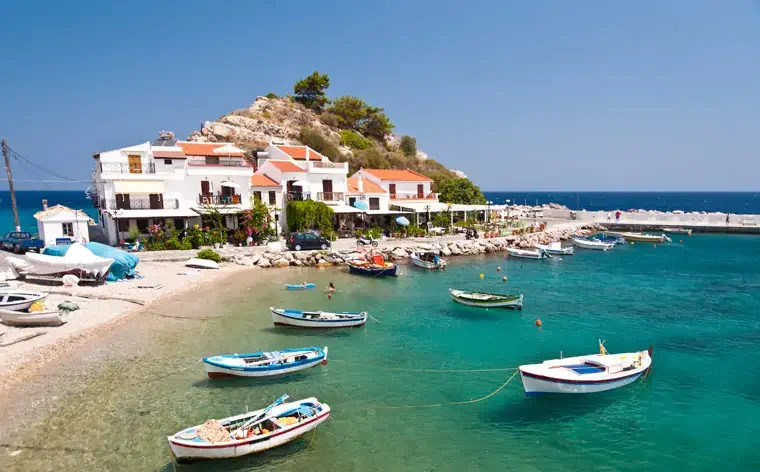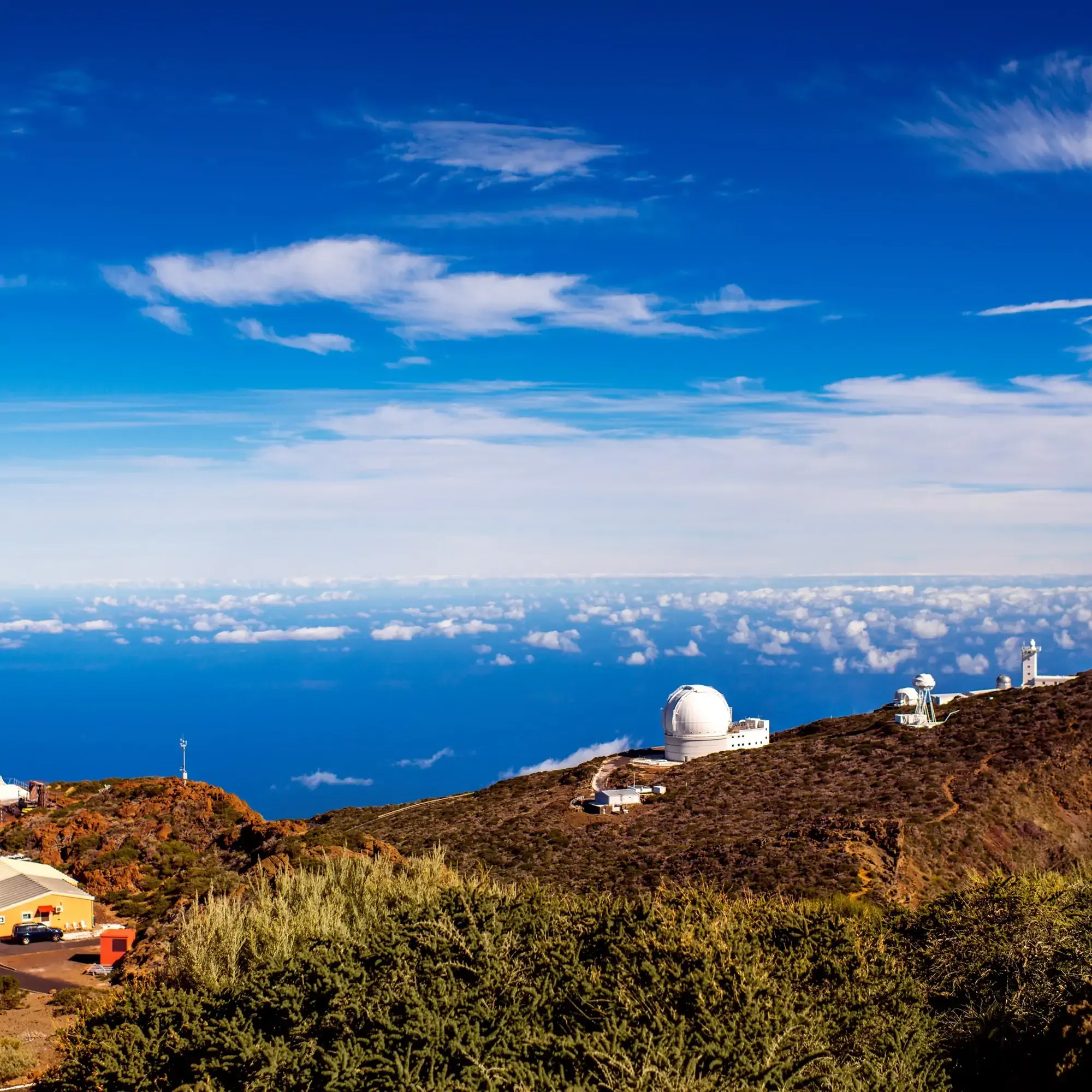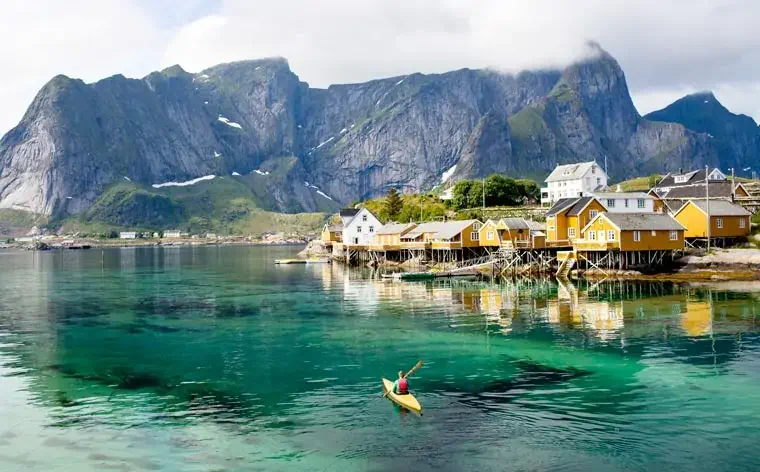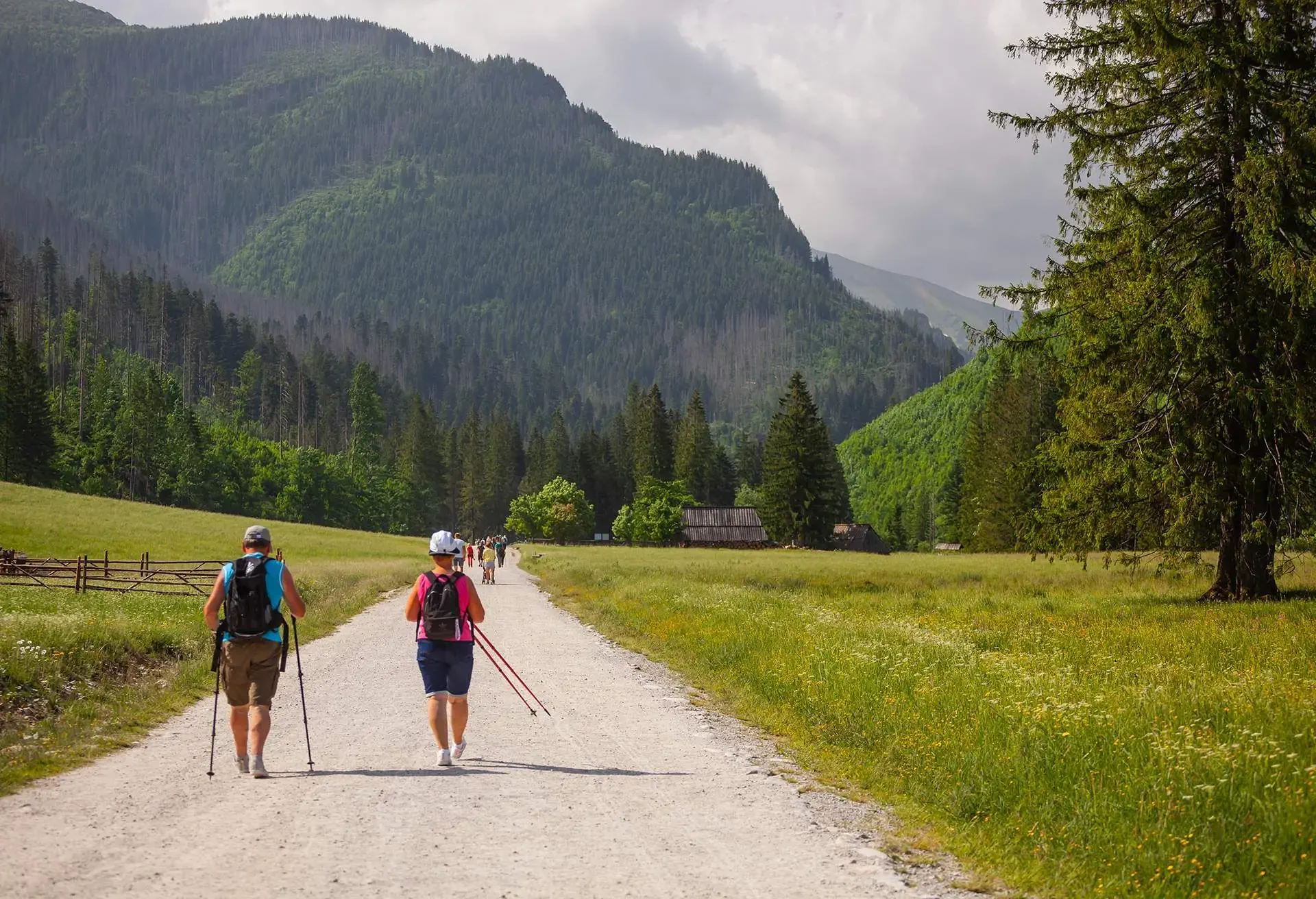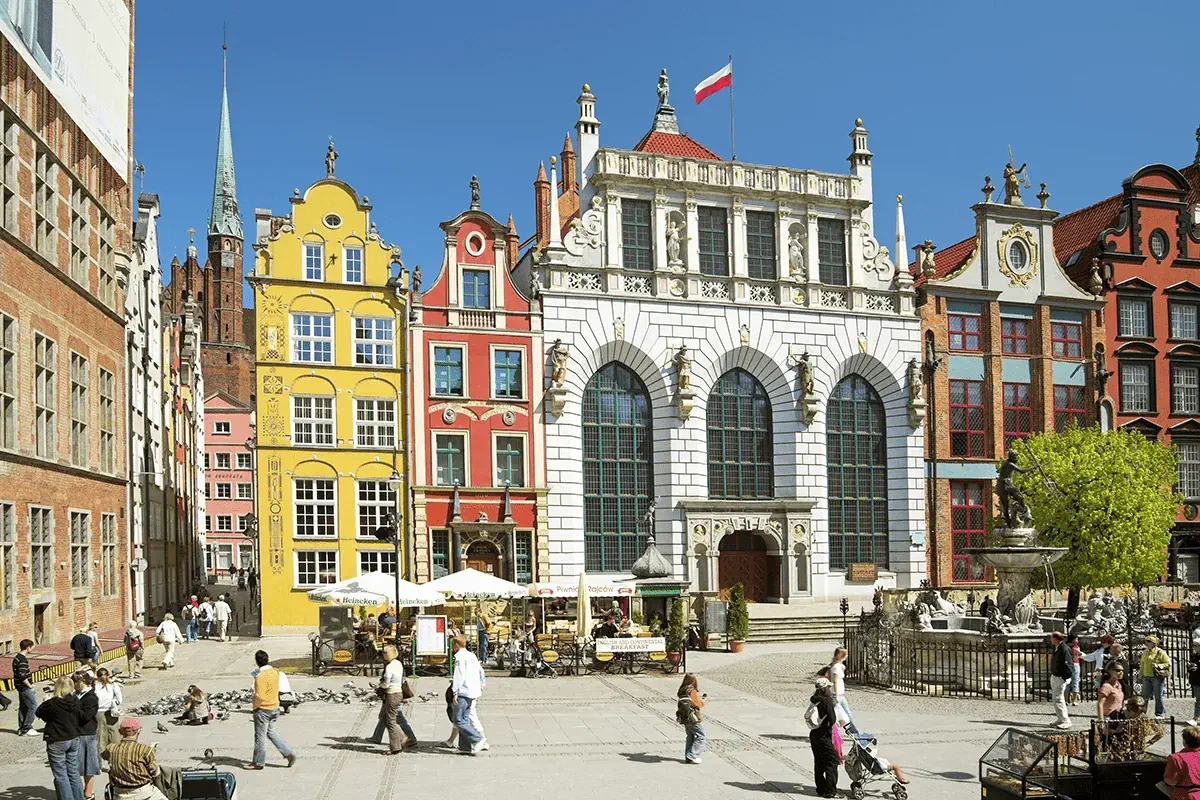With thousands of islands to choose from, Greece is arguably the best destination for slow living in paradisiacal landscapes steeped in history. Dust off your sandals left in your wardrobe far too long – with spring peeking its nose around the corner, it’s time to get a head start on planning the perfect Greek island getaway.
Each Greek isle has a secret of its own, so whether you’re seeking breath-taking scenery, nautical adventures, or a trip back in time, this list of some of our favourites will help you choose the perfect place to satisfy your inner Greek god or goddess.
Paros & Antiparos, Cyclades
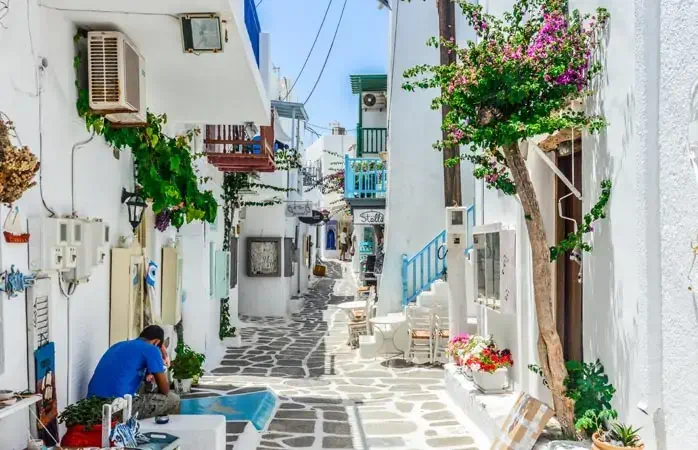
For a rush of adrenaline, riding a scooter, wind in your hair, along the curling roads of capital city Parikia is the best way to see Paros. Around town, you’ll be able to recognise the typical marble of this island, bright and translucent, which was also used to sculpt the Venus of Milo displayed in the Louvre museum in Paris.
More marble structures can be found if you explore the 4th century Panagia Ekatontapiliani, the Church of 100 Doors. On the south part of the island, the beaches belong to kite surfers that brave the infamous Cycladic winds.
Less than a 2-kilometre boat ride away, the small and secluded island of Antiparos is a perfect island hop to explore transparent blue creeks, fish for sea urchins, and hike through the cedar trees. For the ambitious sunbather, show some skin on the clothing optional and naturist beaches scattered around the island. Soros beach and the coves at Agios Georgios are your best options for quiet skinny-dips in the azure waters.
Feel even closer to nature by pitching your tent on the island’s many organised campsites. The shade of the trees, the light breeze, and the aroma of wild plants is all you need to lull you into a deep peaceful sleep.
Get there: Get there by ferry from the ports of Piraeus, Rafina and Lavrio – the trip varies between 3-5 hours depending on the type of ferry you choose to take.
Crete
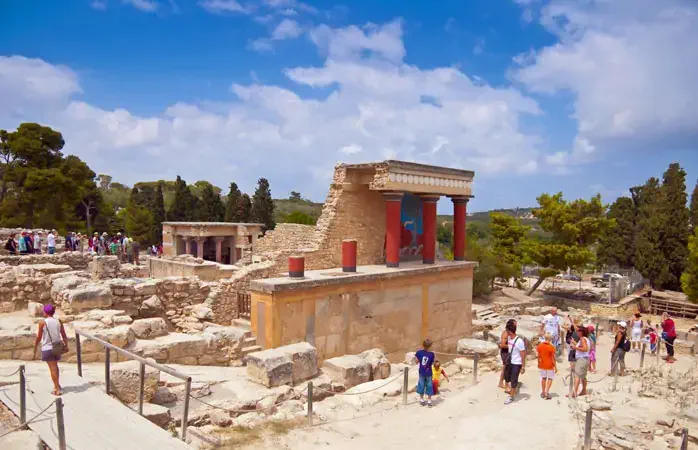
Crete is the biggest of the Greek island siblings, with over 1000 kilometres of coastline to choose from. As you drive coast to coast, you’ll inevitably experience the island’s natural beauty, like its mountains and sea views.
Keep your eyes peeled for the brown road signs indicating historic monasteries and ruins worth the detour. The Archaeological Museum of Heraklion houses a collection of Minoan artefacts, with key pieces being frescoes from 1800BC like the famous charging bull fresco from the Palace of Knossos.
One cannot go to Crete and without relishing in the Cretan diet famous for being healthy and balanced. Seasonal produce, fresh fish, olives, homemade bread, and local cheeses compose most of the dishes.
Dining happens rather late in Crete, around 10 pm, so serve yourself a refreshing Raki (anise-flavoured alcoholic drink popular in Turkey) and watch the terraces fill up for the evening. The more refined palates should tuck into Cretan snails drenched in olive oil, lemon juice and wild thyme – the epitome of the island’s slow-food.
Top off your day feeling like the king of the Mediterranean lounging poolside at the 5-star resorts in Elounda, or own the night partying in ever-popular nightlife hub, Malia.
Get there: The easiest way to get there is by air to the island airports of Haniá, Iráklio (Heraklion) and Sitía
Lefkada, Ionian islands
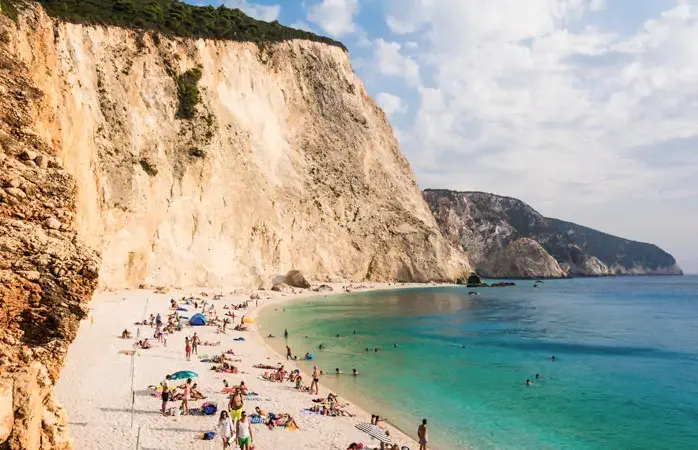
Would you believe that you can drive into this island paradise? A tiny bridge links mainland Greece to Lefkada, where you are greeted by turquoise bays of the Ionian Sea. The island’s finest sights are the white cliffs at Egremni beach.
Head inland to the ancient municipality of Sfakiotes, composed of several historic settlements, for a promenade through time amongst the charm of the olive groves and locals sweeping their porches. Lazy days here start with an iced coffee and end with an ice-cold Ouzo (anise-flavoured alcoholic drink) to stay cool under the hot sun.
The liveliest of places to spend the evening is in the square facing St. Spiridon Church in Lefkada Town, where you can stumble upon anything from religious processions to outdoor performances. The church is sandwiched between busy restaurant terraces, so join in on the sound of chatter and forks dancing around traditional Greek dishes.
Get there: No need to take a ferry as a bridge links the mainland to the island. A 5-hour bus from Athens is a great option for those who have time to spare. If you wish to fly, Lefkada does not have an airport, however, in the summer, you can catch charter flights from European cities to nearby Preveza and take a 30-minute bus ride to Lefkada.
Samos, North Aegean islands
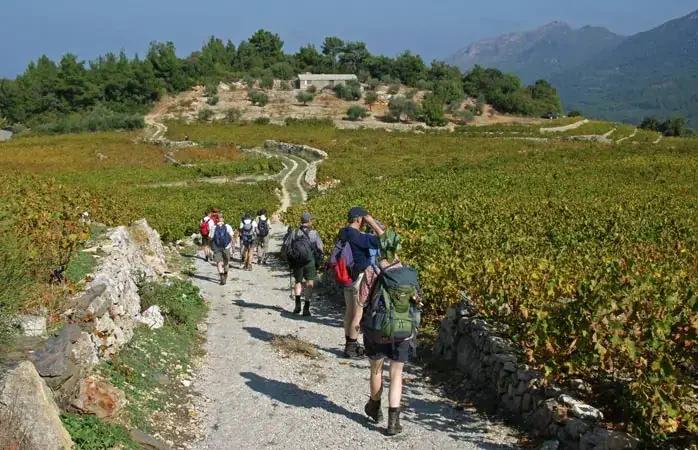
In the Eastern Aegean Sea lies the island of Samos, the birthplace of Hera, wife of Zeus (according to Greek mythology). Only one pillar remains of the three temples built in her honour at the UNESCO World Heritage Site of Heraion in the 6th century.
Explore the virgin vegetation that smothers this island, best admired from the peaks of Mount Kerkis and Mount Ambelos. Patient birdwatchers can explore the outdoors in hopes to spot endemic birds of prey, herons, pelicans, and even pink flamingos.
History runs deep in the roots of Samos. Here, thirst is quenched with nothing other than the sweet Samos Muscat, especially during the wine festival in early August in the capital city Vathy. The Muscat grape is a historic grape said to have been used by Ancient Greeks and much later introduced to the French through trade.
You’ll find numerous varieties of the ancient vines that thanks to their isolation thrived while the rest of Europe’s vineyards were destroyed by the phylloxera plague (pests that laid eggs on vines, stunting their growth) in the 19th century.
Get there: By air, catch a 45-minute flight from Athens, or island hop from Chios on a 3-4-hour ferry ride
Chios, North Aegean islands
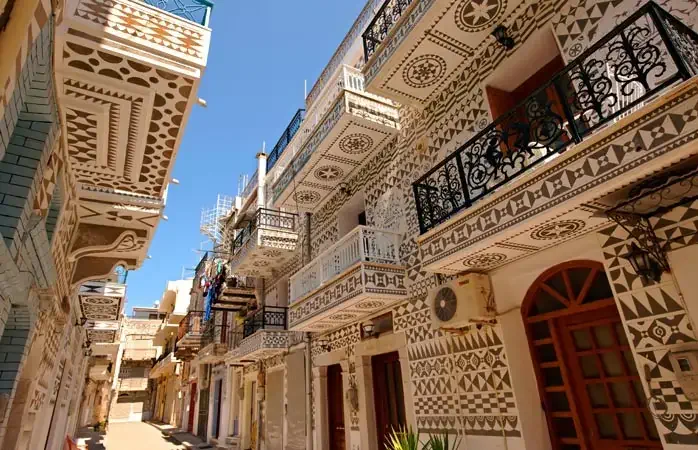
Chios is a magical secret and the Greeks intend to keep it that way. Get lost exploring Mesta, a medieval village, built as a fortified maze, where you can meander through tunnels only to exit upon rooftops or private courtyards.
Floating high above the island clinging to the hillside, the ghost town of Anatavos hides a tragic story. Abandoned after the Chios Massacre of 1822 (the killing of thousands of Greeks by Ottoman troops during the Greek War of Independence), the city is a national monument kept by a few locals selling local goods and mezedes (small tapas-like food plates).
Chios is also home to a unique crop – the mastic or Arabic gum trees – the only tree to produce aromatic mastic sap. The southern region, Mastichochoria (literally mastic villages), is a labyrinth of seven villages with narrow streets and intricate facades.
Black and white decorative elements engulf every inch of the city from the floor up and under each balcony. Even Mavra Volia beach seems to imitate the colour scheme as the black volcanic pebbles contrast with the deep blue sea and bright yellow stone.
Get there: Fly into Chios from Athens (45 minutes) or Crete (a little over an hour). There are also regular ferry trips from Samos that take a couple of hours, or from mainland Pireas and Kavala, but can take over 5 hours depending on the speed of the ferry you choose.
Kalymnos, Dodecanese
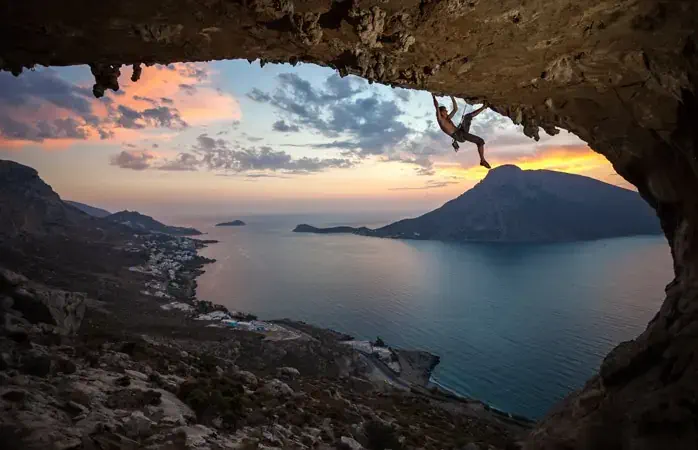
When lazing around the beach just isn’t enough, Kalymnos offers limitless activities for the sporty islander. Kalymnos, a stone’s throw away from Turkey, is widely known for its natural sponge harvesting. One of the oldest forms of diving, identified in works by Plato and Homer, divers can explore the seabed in hopes of finding the rarefied “Kalymnian gold”, sold on sponge markets and factories.
During Easter and the following week, celebrations take place throughout the island showcasing sponge diving techniques and folkloric songs about this spongy animal that brought the island to fame.
High above water, the rocky landscape makes for a vast climbing mecca, with thousands of secured climbing tracks. Grande Grotta, a wide cave facing the sea, gives for an impressive panoramic sunset if you’re skilled enough to hang from 50 meters on a limestone wall covered in stalactites.
Get there: The best budget solution to get to Kalymnos is to fly or ferry from Athens or Bodrum to the island of Kos (you can also take international flights directly to Kos, if available from your country). Get on over to Pathia, Kalymnos’ main port, on a 35-minute high-speed ferry ride, or for half the price, a cheaper, slower ferry will take only one hour more.
Corfu, Ionian islands
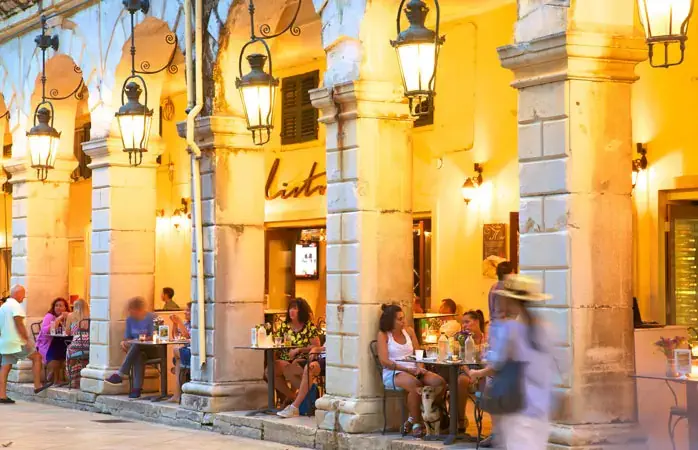
Corfu Old Town is nothing like the chalk-white and blue-domed Greek archetype, but rather an architectural reflection of the French, Venetian, and British forces that once ruled here. The UNESCO World Heritage Site is a blend of Renaissance and Baroque buildings, particularly stunning on the central Spianada square where you can stroll under the shaded archways or rotundas.
Besides a few inevitable resort-covered shores, dive into the thick cypress tree-shrouded mountains. High-perched villages peak out above the hills, hiding relics like the twenty or so churches scattered around the ancient village of Ano Korakiana. In an effort to preserve these villages from desertion, the long distance Corfu Trail stretches over 220 kilometres connecting untouched landscapes and shabby villages by way of scenic footpaths and cobbled mule paths.
Get there: You can find a few direct flights from certain big cities, or if you’re connecting via mainland Greece, you can take a 1-hour flight from Athens or Thessaloniki

